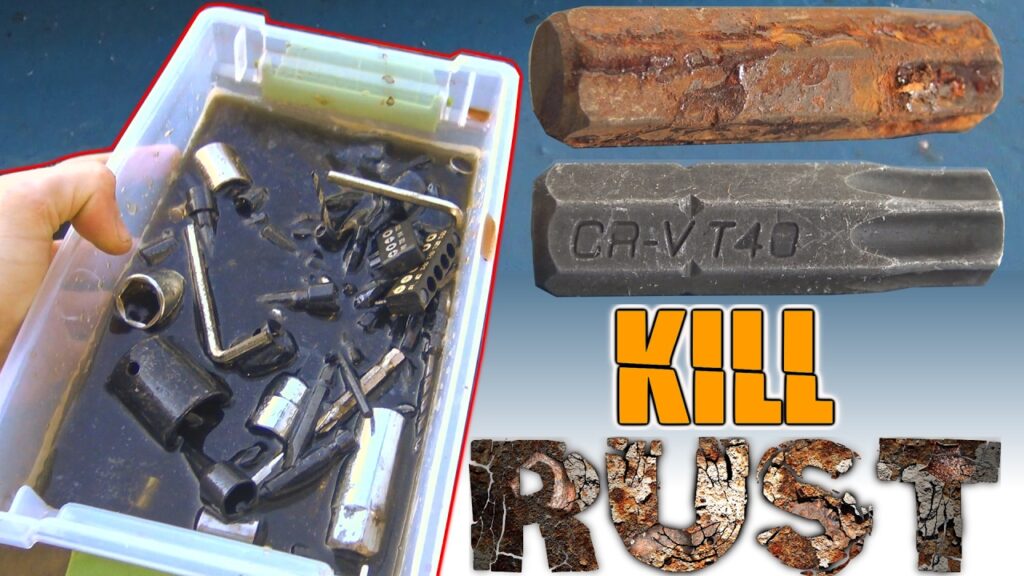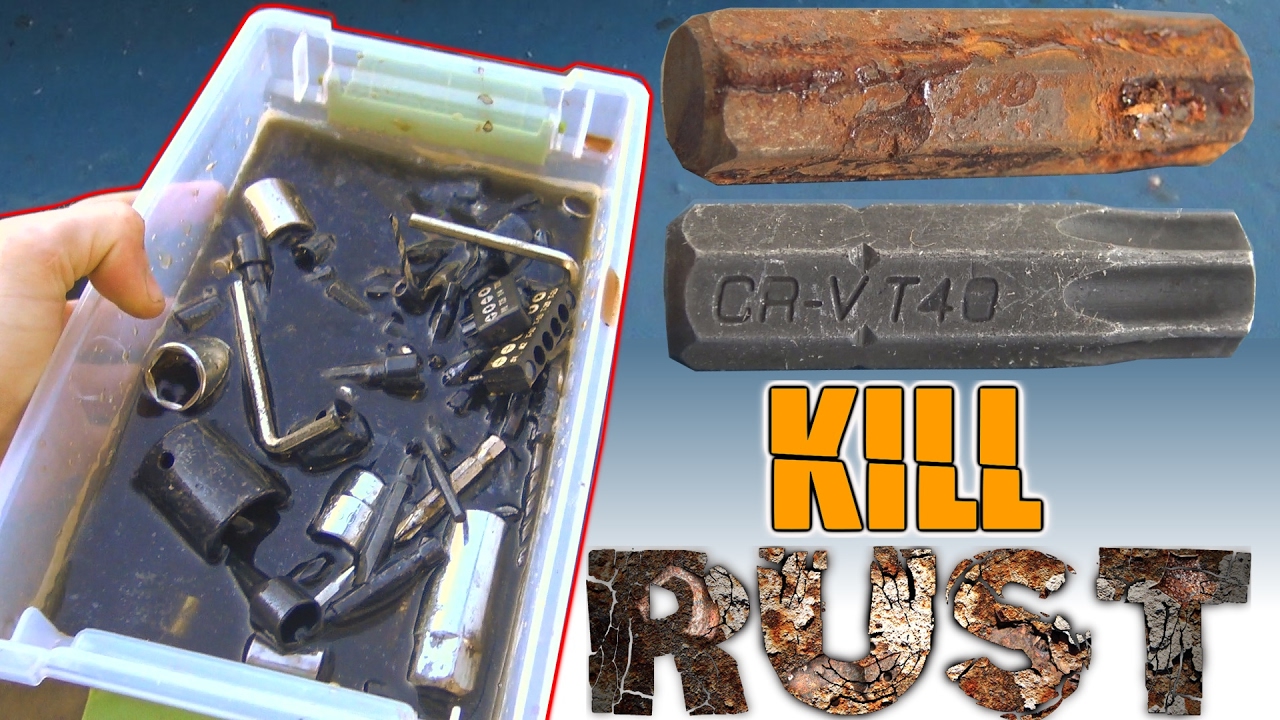
How to Clean Rusty Metal Tools: A Comprehensive Guide
Rust. The bane of every tool owner’s existence. It creeps up on your prized possessions, silently corroding and diminishing their effectiveness. If you’re reading this, chances are you’re facing the frustrating reality of rusty metal tools. But don’t despair! This comprehensive guide will equip you with the knowledge and techniques to effectively clean rusty metal tools and restore them to their former glory. We’ll explore various methods, from simple household solutions to more advanced techniques, ensuring that you can find the perfect approach for your specific situation. Learning how to clean rusty metal tools is an essential skill for any homeowner, DIY enthusiast, or professional tradesperson. Investing the time to restore your tools not only saves you money but also prolongs the life of your equipment and ensures optimal performance.
Understanding Rust and Its Impact
Before diving into the cleaning process, it’s crucial to understand what rust is and why it’s so damaging. Rust, scientifically known as iron oxide, is the result of a chemical reaction between iron, oxygen, and moisture. This reaction weakens the metal, causing it to flake, pit, and eventually crumble. The presence of salt accelerates this process, making tools exposed to coastal environments or road salt particularly susceptible. Ignoring rust can lead to tool failure, posing safety risks and hindering your ability to complete tasks effectively. Therefore, knowing how to clean rusty metal tools and prevent future corrosion is paramount.
Safety First: Preparing for the Cleaning Process
Before you begin any rust removal process, prioritizing safety is essential. Here’s what you need:
- Gloves: Protect your hands from harsh chemicals and sharp edges.
- Eye Protection: Safety glasses or goggles are crucial to prevent rust particles or cleaning solutions from entering your eyes.
- Mask: Especially when using power tools or chemical solutions, a dust mask or respirator will protect your lungs from harmful particles and fumes.
- Ventilation: Work in a well-ventilated area to avoid inhaling fumes from cleaning agents.
Once you have your safety gear in place, prepare your workspace by laying down a drop cloth or newspaper to protect the surface from spills and debris.
Methods for Cleaning Rusty Metal Tools
Several methods can be used to clean rusty metal tools, each with its own advantages and disadvantages. We will cover a range of techniques, from natural remedies to more robust chemical treatments.
Vinegar Soak
Vinegar, a common household ingredient, is a mild acid that effectively dissolves rust. This method is ideal for lightly rusted tools.
- Preparation: Submerge the rusty metal tools in a container filled with white vinegar. Ensure the tools are completely covered.
- Soaking Time: Allow the tools to soak for at least 12 hours, or even up to 24 hours for heavily rusted items.
- Scrubbing: After soaking, remove the tools and scrub them with a stiff brush or steel wool to remove the loosened rust.
- Rinsing and Drying: Rinse the tools thoroughly with water and dry them completely to prevent further rusting.
Baking Soda Paste
Baking soda is a mild abrasive that can gently remove rust without damaging the underlying metal. This is a good option for delicate tools or those with sensitive finishes.
- Preparation: Mix baking soda with water to create a thick paste.
- Application: Apply the paste generously to the rusty metal tools.
- Scrubbing: Scrub the tools with a brush or cloth.
- Rinsing and Drying: Rinse the tools thoroughly and dry them completely.
Lemon Juice and Salt
The citric acid in lemon juice, combined with the abrasive action of salt, can help remove rust. This is a natural and environmentally friendly option.
- Preparation: Sprinkle salt over the rusted areas of the tools.
- Application: Squeeze lemon juice over the salt.
- Resting Time: Let the mixture sit for 2-3 hours.
- Scrubbing: Scrub the tools with a brush or cloth.
- Rinsing and Drying: Rinse the tools thoroughly and dry them completely.
Citric Acid Soak
Citric acid, available in powder form, is a stronger acid than vinegar and lemon juice, making it effective for more heavily rusted tools.
- Preparation: Dissolve citric acid powder in water (follow the instructions on the product packaging for the correct ratio).
- Soaking: Submerge the rusty metal tools in the solution.
- Soaking Time: Soak for several hours or overnight, depending on the severity of the rust.
- Scrubbing: Scrub the tools with a brush or steel wool after soaking.
- Rinsing and Drying: Rinse the tools thoroughly and dry them completely.
Commercial Rust Removers
Commercial rust removers are specifically formulated to dissolve rust quickly and effectively. These products often contain strong acids, so it’s crucial to follow the manufacturer’s instructions carefully and wear appropriate safety gear.
- Application: Apply the rust remover to the rusty metal tools according to the product instructions.
- Waiting Time: Allow the product to sit for the recommended time.
- Scrubbing: Scrub the tools with a brush or steel wool.
- Rinsing and Drying: Rinse the tools thoroughly and dry them completely.
Electrolysis
Electrolysis is a more advanced method that uses an electrical current to remove rust. This method is effective for heavily rusted tools and can reach areas that are difficult to access with other methods.
Important Note: Electrolysis involves electricity and water, so it’s crucial to take precautions and follow safety guidelines carefully. If you are not comfortable working with electricity, it’s best to avoid this method.
- Setup: You will need a plastic container, water, washing soda (sodium carbonate), a sacrificial anode (a piece of scrap metal), a battery charger, and wires.
- Solution: Dissolve washing soda in water.
- Arrangement: Place the rusty metal tool in the container, ensuring it does not touch the sacrificial anode.
- Connection: Connect the positive terminal of the battery charger to the sacrificial anode and the negative terminal to the tool.
- Process: Turn on the battery charger and allow the electrolysis process to run for several hours. Monitor the process closely.
- Cleaning: After electrolysis, remove the tool, scrub off any remaining residue, rinse thoroughly, and dry completely.
Mechanical Methods: Wire Brushes and Sandpaper
For stubborn rust, mechanical methods like wire brushing and sanding can be effective. Use caution when using these methods, as they can scratch or damage the underlying metal if applied too aggressively.
- Wire Brushes: Use a wire brush to scrub away loose rust. Available in hand-held and drill-powered versions.
- Sandpaper: Use progressively finer grits of sandpaper to remove rust and smooth the surface. Start with a coarse grit to remove heavy rust and then move to finer grits to refine the finish.
Power Tools: Grinders and Sanders
Power tools like grinders and sanders can quickly remove rust from large surfaces. However, they can also be aggressive and remove too much metal if not used carefully. Use appropriate safety gear and exercise caution.
Preventing Rust: Protecting Your Tools
Once you’ve successfully cleaned rusty metal tools, it’s essential to take steps to prevent rust from returning. Here are some preventative measures:
- Clean Tools After Use: Wipe down your tools after each use to remove dirt, moisture, and corrosive substances.
- Dry Tools Thoroughly: Moisture is a major contributor to rust, so ensure your tools are completely dry before storing them.
- Apply a Protective Coating: Apply a thin layer of oil, grease, or a rust-inhibiting coating to protect the metal from moisture and oxygen. WD-40, silicone spray, or specialized tool protectants are all good options.
- Store Tools Properly: Store your tools in a dry, well-ventilated area. Avoid storing them in damp basements or sheds. Toolboxes with desiccant packs can help absorb moisture.
- Regular Inspection: Periodically inspect your tools for signs of rust and address any issues promptly.
Conclusion: Maintaining Your Investment
Cleaning rusty metal tools may seem like a daunting task, but with the right knowledge and techniques, it’s a manageable process. By understanding the causes of rust, employing appropriate cleaning methods, and implementing preventative measures, you can significantly extend the life of your tools and maintain their optimal performance. Remember, your tools are an investment, and taking care of them will save you time and money in the long run. So, roll up your sleeves, grab your safety gear, and start restoring your rusty metal tools today! [See also: Best Tool Storage Solutions] [See also: How to Sharpen Garden Tools] [See also: DIY Tool Maintenance Tips]

